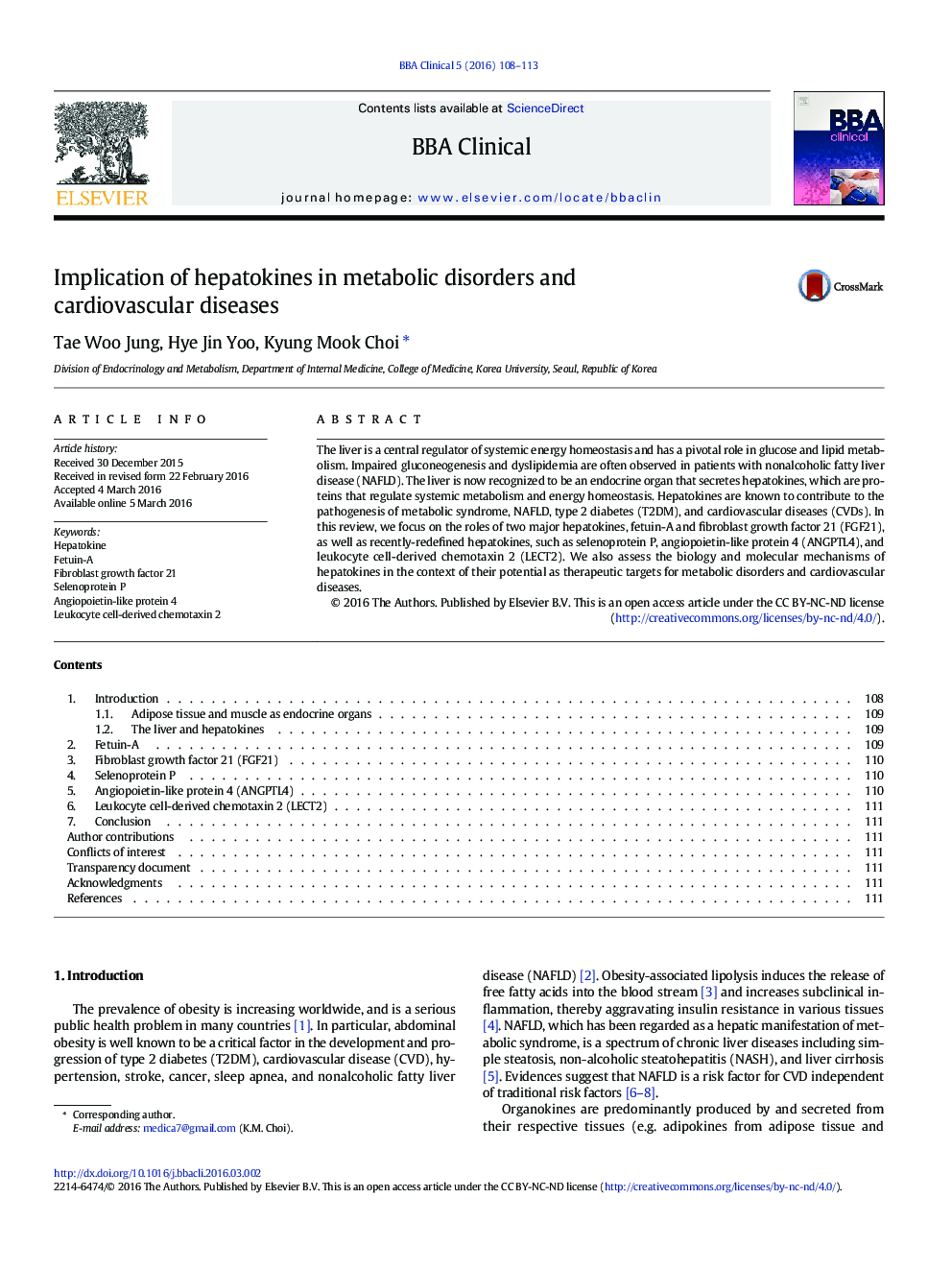| کد مقاله | کد نشریه | سال انتشار | مقاله انگلیسی | نسخه تمام متن |
|---|---|---|---|---|
| 2773083 | 1567897 | 2016 | 6 صفحه PDF | دانلود رایگان |
• The roles of hepatokines such as fetuin-A, FGF21, selenoprotein P, ANGPTL4, and LECT2
• The molecular mechanisms of hepatokines in metabolic disorders and CVD
• Hepatokines as therapeutic strategies for metabolic disorders and CVD
The liver is a central regulator of systemic energy homeostasis and has a pivotal role in glucose and lipid metabolism. Impaired gluconeogenesis and dyslipidemia are often observed in patients with nonalcoholic fatty liver disease (NAFLD). The liver is now recognized to be an endocrine organ that secretes hepatokines, which are proteins that regulate systemic metabolism and energy homeostasis. Hepatokines are known to contribute to the pathogenesis of metabolic syndrome, NAFLD, type 2 diabetes (T2DM), and cardiovascular diseases (CVDs). In this review, we focus on the roles of two major hepatokines, fetuin-A and fibroblast growth factor 21 (FGF21), as well as recently-redefined hepatokines, such as selenoprotein P, angiopoietin-like protein 4 (ANGPTL4), and leukocyte cell-derived chemotaxin 2 (LECT2). We also assess the biology and molecular mechanisms of hepatokines in the context of their potential as therapeutic targets for metabolic disorders and cardiovascular diseases.
Journal: BBA Clinical - Volume 5, June 2016, Pages 108–113
